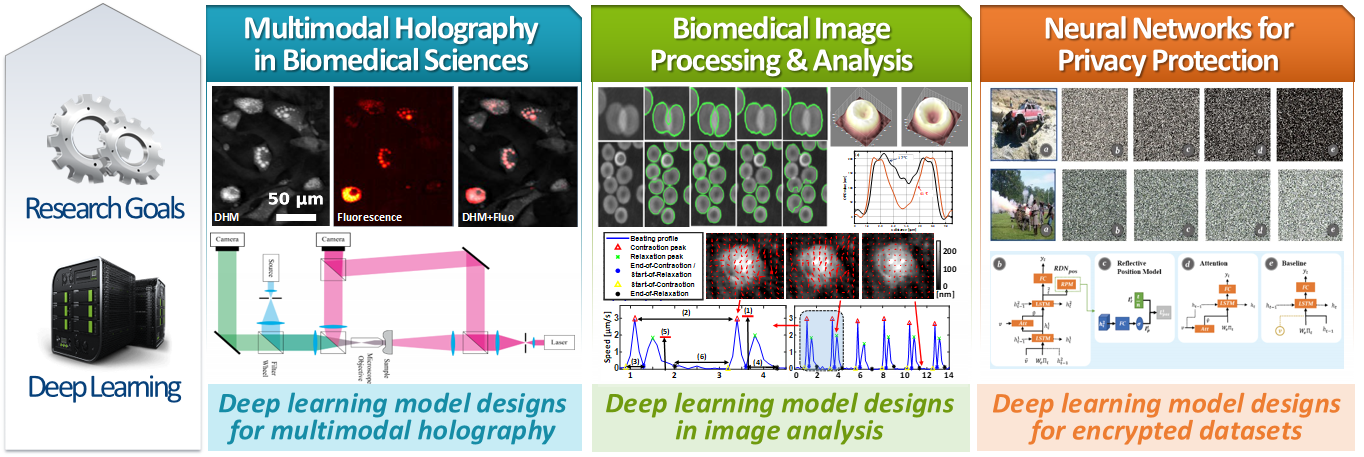
Major Research Achievements
- Intelligent holographic imaging systems with artificial intelligence: 1) New multi-modal holographic imaging systems in the field of life sciences (cell imaging & analysis), 2) Developments in intelligent holography integrated with numerical information processing and deep learning which enables to obtain rich, quantitative information about the structure of cells and microorganisms in noninvasive, real-time conditions
- Image cryptosystems with digital optics: Studied on image cryptography to simultaneously provide confidentiality and integrity of unstructured big-data through the fusion of deep learning, computational optics, and digital cryptography
- Research on AI-based cryptanalysis and security evaluation: 1) Studied on the fully automated cipher breaking method and the cipher emulation cryptanalytic attacks for standard digital cipher algorithms with CNNs, RNNs, and GANs, 2) Developments in a hybrid LSTM combined with gated recurrent units (GRU) network model for ciphertext analysis.
- Published more than 90 referred articles in journals listed in Science Citation Index (SCI) or Science Citation Index Expanded (SCIE) including Proc. of IEEE, IEEE Transactions of Medical Imaging, IEEE Internet of Things Journal, IEEE Journal of Biomedical and Health Informatics, Biosensors and Bioelectronics, ACS Sensors, ACS Photonics, Optics Express, Biomedical Optics Express, and so on.
- Total citations: over 3320 (Google scholar), H-index: 32
Research Vision
- Intelligent Imaging and Vision Systems (IIVs) laboratory is developing deep learning models, holography-based imaging systems, image analysis algorithms, and big-data cryptosystems: Specifically, (1) Low-cost, portable and practicable holography in multimodal platforms with deep learning, (2) Intelligent imaging systems with the fusion of multimodal holography and deep learning models for biomedical applications in the field of cell biology, (3) New cryptography & cryptanalysis with artificial intelligence and digital optics for various security applications, and 4) Design of automated algorithms to estimate various different types of information on the cell state and enable a comprehensive understanding of cell structure and dynamics with nanoscale sensitivity through the fusion of multimodal holography, 3D image processing, and machine learning for phenotypic high throughput screening (HTS) & high contents screening (HCS)
Networking with International Communities
- Intelligent Imaging and Vision Systems laboratory has collaborated with more than 5 internationally leading groups in research on the 3D imaging group (Univ. of Connecticut) in USA, biomolecular screening group (EPFL) in Switzerland, 3D image processing group (Ben-Gurion University of the Negev) in Israel, neuroscience group (Laval Univ.) in Canada, and cellular dynamics/neuroenergetics group (Univ. of Lausanne Medical School and Hospital, EPFL) in Switzerland
- IIVs collaborates with Lyncée Tec, Switzerland for the development of the unique deep learning tools exploiting the strength of digital holographic microscopy in cell biology studies